#Agostino Brunias
Text
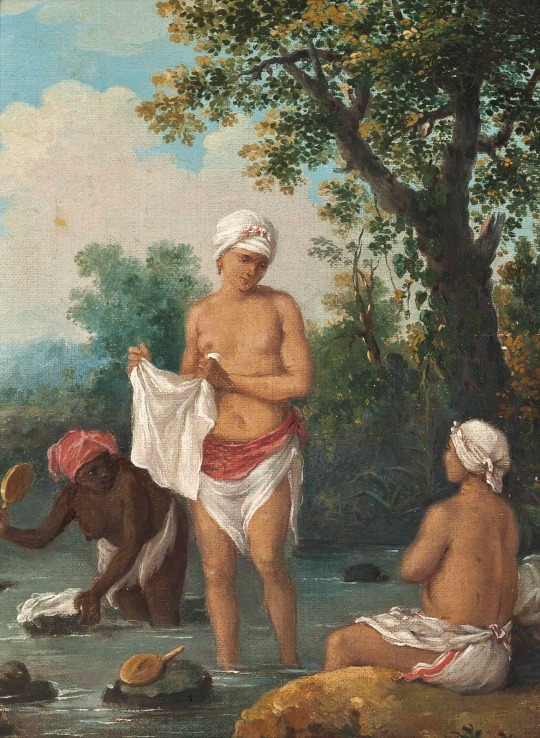
Agostino Brunias (1730-1796) Women of Dominica washing clothes in a stream
21 notes
·
View notes
Text

A West Indian Flower Girl and two Other Free Women of Colour, Agostino Brunias, 1769
#a West Indian flower girl and two other free women of colour#agostino brunias#brunias#1769#1760s#1700s#18th century#painting#art
25 notes
·
View notes
Text

A linen market with a linen-stall and vegetable seller in the West Indies, Follower of Agostino Brunias
18 notes
·
View notes
Photo
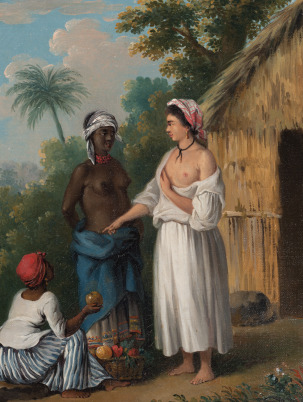
Agostino Brunias - Mulatress Purchasing Fruit from a Negro Woman (mid to late 18th century)
Source: Mia L. Bagneris - Colouring the Caribbean: Race and the Art of Agostino Brunias (2018: 105)
1 note
·
View note
Text

Ms. Lucy went on to explain that she was enlisting the kids' assistance in burying the body, undoubtedly an important life skill they could all use to learn. She asked them to fetch the shovel, and several boys raced off to try and grab it first. What dummies, thought Oluwande. Don't they realize that whoever has the shovel will end up doing most of the work?
He watched as flies accumulated on the dead man's neck. "Yuck." said a voice to his right. Oluwande turned to see that Wren, too, was engrossed by the fatal wound. "Think we could turn him into a zombie?"
Oluwande's backstory wrote itself in my head, so I wrangled it into coherency to write it down for y'all. I just really wanted him to have as happy a childhood as possible despite ending up in a life he says he wouldn't have chosen.
Rating: Mature
Category: Gen
Chapters: 2/8
#ofmd#our flag means death#oluwande boodhari#the title is what oluwande means in yoruba#and the painting i use for the background up there is view on the river roseau; dominica by agostino brunias#brunias is a great source for visual depictions of free people of color in the caribbean in the 1700s#yes i /did/ do entirely too much research for a fic that eschews any semblance of historical accuracy anyways thanks for asking
1 note
·
View note
Text

Free Women of Color with Their Children and Servants in a Landscape (ca. 1770-1796) by Agostino Brunias
While this idyllic scene seemingly endorses the cultural and racial hybridity of the region, it also projects a colonial fantasy that erases enslaved labor. (source)
#Free Women of Color with Their Children and Servants in a Landscape#1700s#colonialism#Agostimo Brunias#art#painting#controversial#Miss Cromwell
3 notes
·
View notes
Text
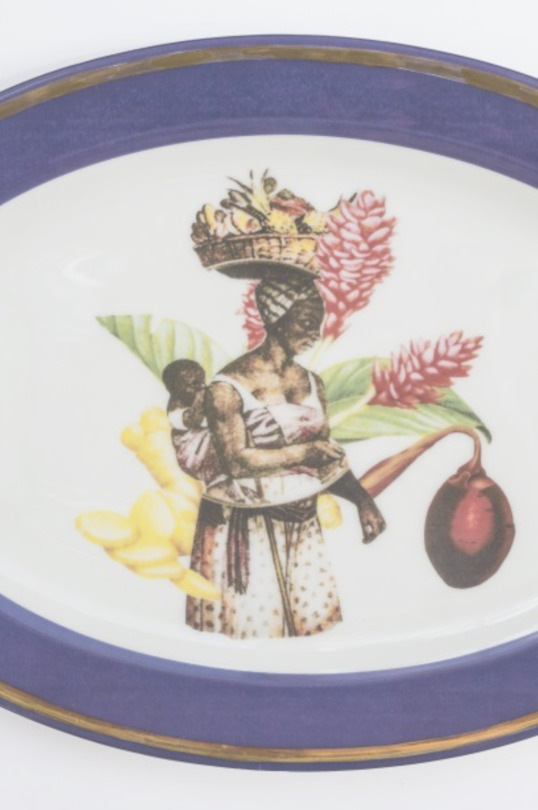
Sexypink - JACQUELINE BISHOP, writer and visual artist, born in Kingston, Jamaica, and who now lives and works in New York City. She has held several Fulbright Fellowships, and exhibited her work widely in North America, Europe and North Africa. She is also an Associate Professor in the School of Liberal Studies at New York University.
On one hand, the market woman/huckster is the most ubiquitous figure to emerge from plantation Jamaica. Yet, as pervasive as the figure of the market woman is in Jamaican and Caribbean art and visual culture, she remains critically overlooked. In this set of fifteen dishes, I am both paying homage to the market woman—centering her importance to Caribbean society from the period of slavery onwards—and placing her within a critical context. In particular, I place the market woman within a long tradition of female labor depicted in diverse imagery that I have sourced online, including early Jamaican postcards, paintings of enslaved women from Brazil, the colonial paintings of the Italian Agostino Brunias, and present-day photographs, which I collage alongside floral and abolitionist imagery.
I work in ceramics because all the women around me as I grew up—my mother, my grandmother, my great-grandmother—cherished ceramic dinner plates. These were centerpieces kept in one of their most important acquisitions, a specially made mahogany cabinet. To fabricate the plates, it is important that I am working with Emma Price, a British ceramicist based in Stoke-on-Trent in the former Spode factories. In the realization of the series, that connection imbues them with a meaning that shows the long and enduring relationship between England and Jamaica. For that same reason, British Art Studies is a fitting venue for their first ever publication and partner to create an accompanying film exploring the plates and their themes.
Though the likenesses of none of the women in my family are represented in this series, centering the market woman is my way of paying homage to my great-grandmother Celeste Walker, who I grew up knowing very well, and who was a market woman/huckster/milkwoman par excellence. Celeste was born in the tiny district of Nonsuch hidden high in the Blue Mountains in Portland Parish on the island of Jamaica. Her mother died on the way home from a market, when my great-grandmother was too young to even remember her face. In her adulthood, while my great-grandfather farmed the land, my great-grandmother was the huckster who could easily carry bunches of bananas and baskets of food on her head; the market woman who travelled to far away Kingston to sell in Coronation Market, the largest market on the island. She also hawked fresh fish, and prepared and sold coconut oil, ginger beer, cut flowers, and cocoa beans that were pounded in a heavy wooden mortar. I remember her in my childhood as the milkwoman waking very early in the morning and walking through the district selling fresh cow’s milk. The tradition of huckstering would be passed on to my grandmother who relished the role in her older years. My hope in doing this work is to give much respect to the market women of the Jamaican and larger Atlantic world who have fed, and continue to feed, nations. The market woman is the defining symbol of Jamaican and Caribbean societies.
My work integrates the mediums of painting, drawing and photography to explore issues of home, ancestry, family, connectivity and belonging. As someone who has lived longer outside of my birthplace of Jamaica, than I have lived on the island, I am acutely aware of what it means to be simultaneously an insider and an outsider. This ability to see the world from multiple psychological and territorial spaces has led to the development of a particular lens that allows me to view a given environment from a distance. Because I am also a fiction writer and poet as well as a visual artist, the text and narrative are significant parts of my artistic practice.
Oftentimes I utilize a process of competing narratives to have the viewer participate in the creation of meaning. In my “Folly” series I recount a story I heard as a child, of two tales of a “haunted” house. In time, I researched the history of the house and through a process of photomontage combined photographs I took with archival footage to try and tell the two stories. The ghostly images of the past occupants are integrated into the walls and on the grounds of the present-day ruins. The overall effect is spectral and haunting. I also used this process of photomontage in an ongoing series of ethereal and transcendent “Childhood Memories,” in which characters are often split between heaven and earth. There is a palpable sense of loss in these images as characters seek to inhabit a time and a place long gone.
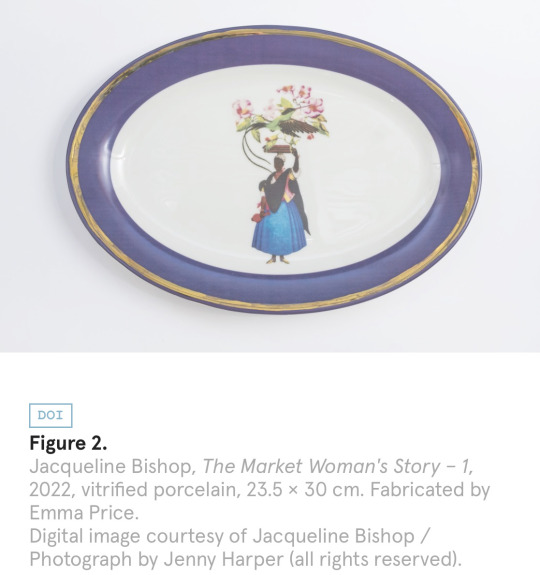
The “Babylon” and “Zion” paintings are about the Rastafarian ideas of Babylon being a place of captivity and oppression while Zion symbolizes a utopian place of unity and peace. In the Babylon series, I write the lyrics from songs and poems to create text-based drip paintings leading up to the “Hanging Gardens of Babylon,” in which I use popular dancehall posters to evoke the inner-city Babylonian “walls” of Kingston. The Zion series is comprised largely of monochrome paintings to delineate this symbolic paradise. Glitter is present in these works not only as a representation of the paradise that Rastafarians seek in the Biblical homeland of Zion but also as a commentary on the ‘bling and glitter’ culture that has enveloped much of Jamaican society. Consequently, my work is very much engaged with helping me to understand my heritage.
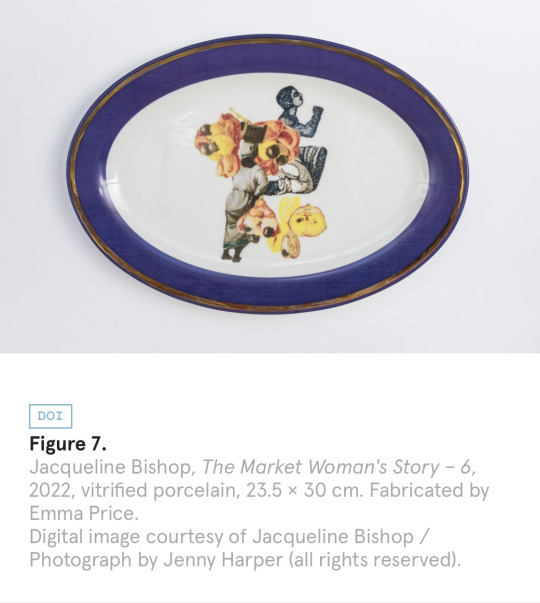
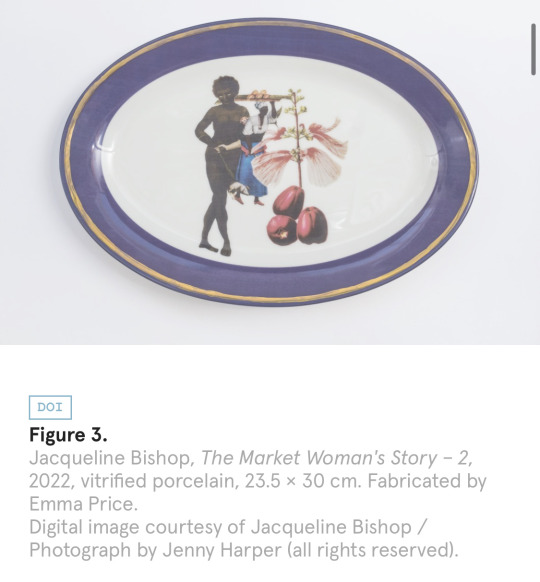
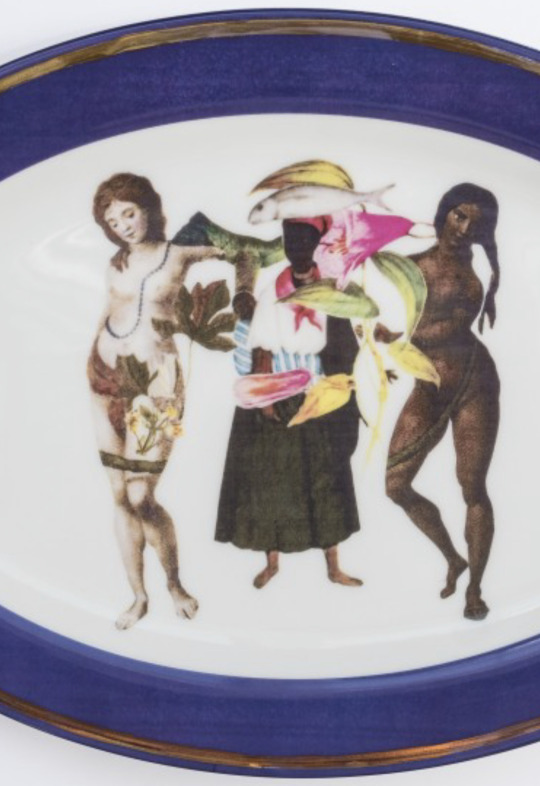
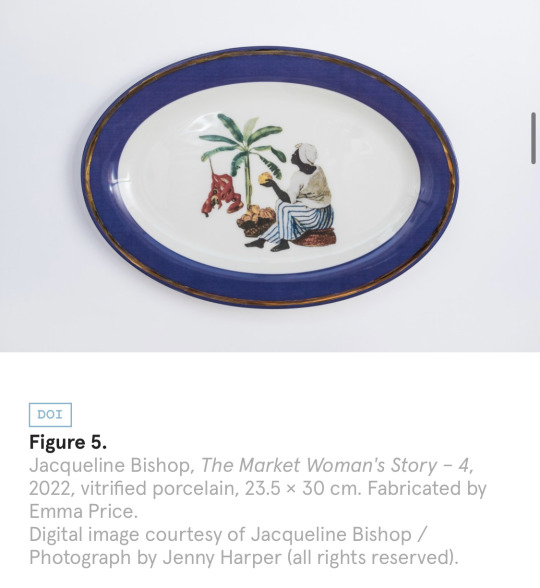
#sexypink/Jaqueline Bishop#sexypink/Jamaican Art#sexypink/ceramics#tumblr/Jaqueline Bishop#ceramics#Jamaican Artist#plates#porcelain pieces#Jaqueline Bishop
2 notes
·
View notes
Text
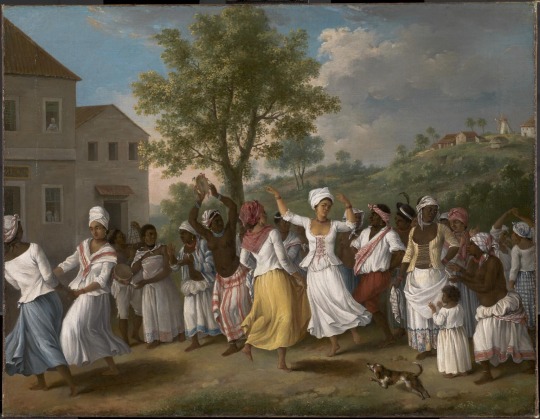
Agostino Brunias
Dancing Scene in the West Indies
1764–96
Tate
10 notes
·
View notes
Text

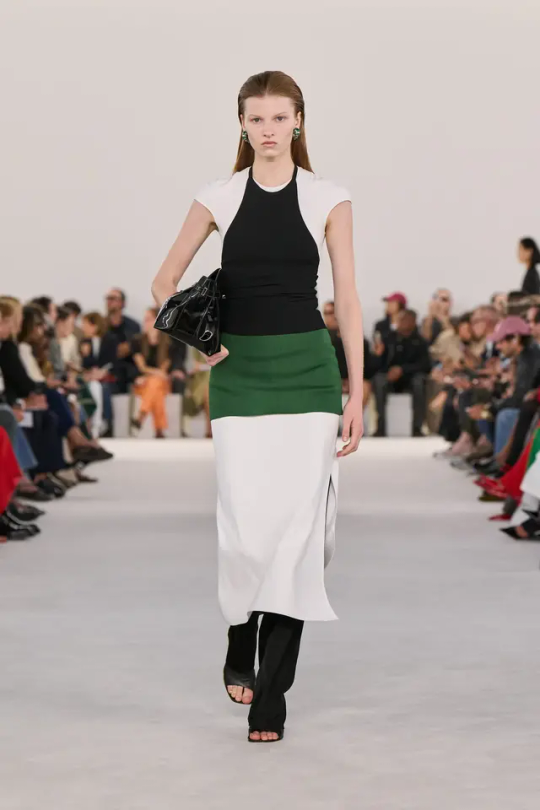



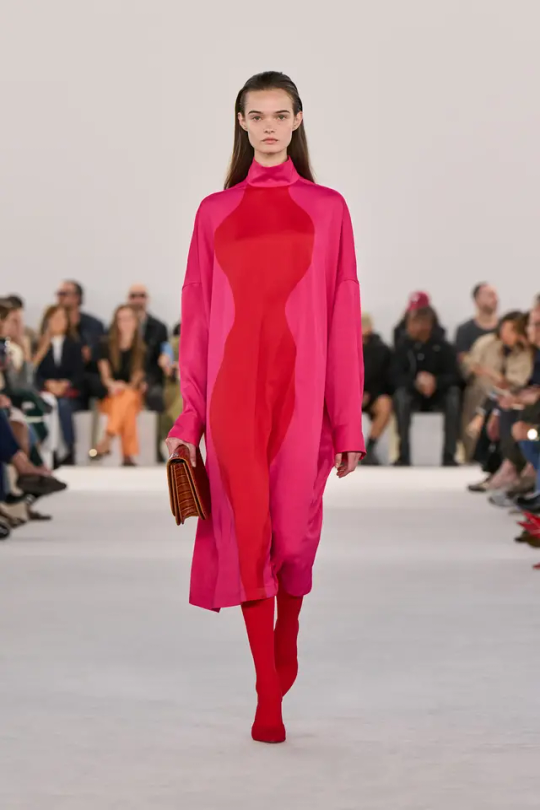






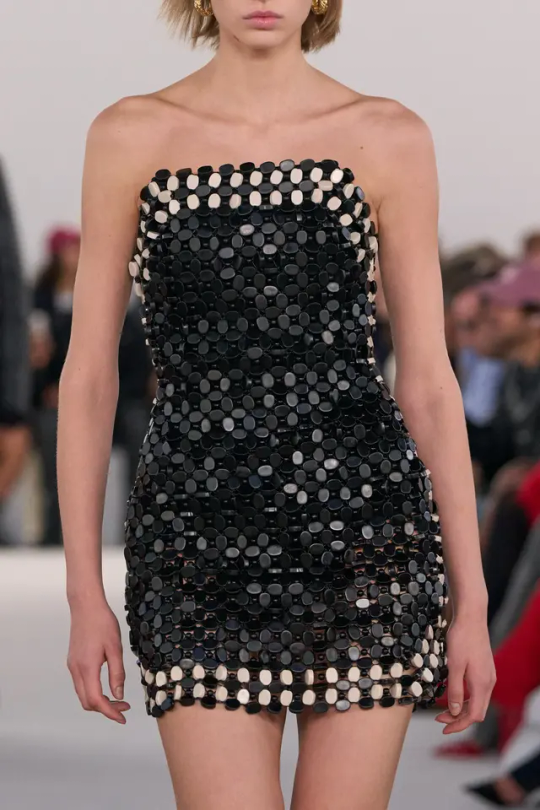





Ferragamo SS24
youtube
From Luke Leitch's review for Vogue:
Backstage, Davis ran smoothly through various seasonal inspirations in this order: Italian marble; the mixed materiality of Arte Povera; sage green; the complex, representationally subversive art of Agostino Brunias painted in 18th-century Hispaniola; and Renaissance armor. A subtle continuation of the early-1950s themes touched more forcefully upon in earlier collections was delivered here via acutely waisted asymmetrical dresses and menswear tailoring that in Look 59 seemed a direct homage to the juvenile style of Italian style-paragon Gianni Agnelli.
The marble reflected the beading on new banana-heel versions of Ferragamo’s 1956 Calipso sandal. The mixed materiality ran through the collection, with the insertion of metal hardware within necklines and panels of leather in a closing section that reflected Davis’s research into armor. The green (momentarily an unclaimed shade in fashion) was evident in a series of impactful leather pieces.
As for the work of Brunias, Davis said it was reflected in the loose, layered cotton pieces that echoed the artist’s depictions of freed people made shortly before the rise of the revolutionary Toussaint Louverture—who wore Brunias miniatures on the buttons of his freedom fighter’s tunic. Ferragamo’s seasoned Tuscan touch for generating sleek luxuriousness, as ever most exquisitely exhibited through its footwear, rendered these complex ingredients into a visually attractive whole that revealed its obliquely coded details via the attention and scrutiny Davis’s work increasingly rewards.
0 notes
Text
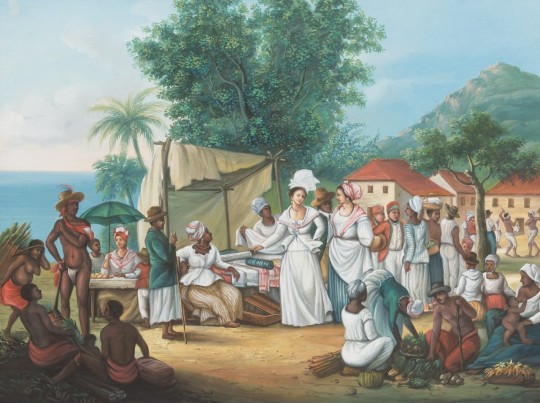
1A linen market with a linen-stall and vegetable seller in the West Indies, Follower of Agostino Brunias
0 notes
Photo

Agostino Brunias Dancing Scene in the West Indies ca.1770
71 notes
·
View notes
Text
1 note
·
View note
Photo
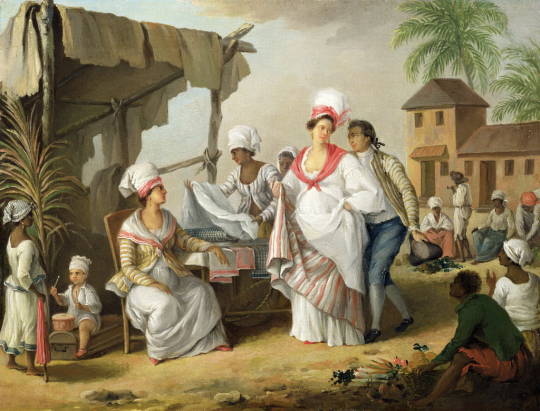
Linen Market, Roseau, Dominica, c.1780
by Agostino Brunias
Oil on canvas
Yale Center for British Art, Gift of Paul Mellon, USA
3 notes
·
View notes
Photo

Source: Mia L. Bagneris - Colouring the Caribbean: Race and the Art of Agostino Brunias (2018: 137)
1 note
·
View note
Photo

Dancing Scene in the West Indies, Agostino Brunias, 1764-96
#dancing scene in the west indies#agostino brunias#brunias#1760s#1790s#painting#art#dancing#history#18th century#1700s
52 notes
·
View notes
Photo

Dancing Scene in the West Indies (c.1764-1796). Agostino Brunias (Italian, c.1730-1796). Oil paint on canvas. Tate.
This small and vividly coloured oil painting shows a predominantly female group of figures dancing in an open area of bare, sandy ground before two solidly-built two-storey buildings and a hilly, richly vegetated landscape, surmounted on the right by further solid-looking buildings, a thatched hut and a windmill. The setting is intended as the Caribbean, probably St Vincent or Dominica where the Italian-born artist Brunias was largely based from c.1764 until his death in 1796.
105 notes
·
View notes